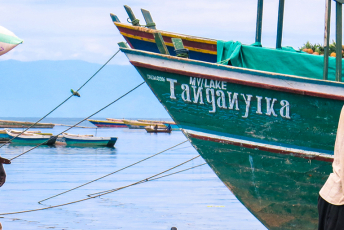With donkeys in Kenya being slaughtered at a rate five times higher than they’re being bred, it’s projected that there will be none left in the country by 2023. Donkey skins contain gelatin – ejiao – used in traditional Chinese medicine as a traditional remedy for many illnesses, including the coronavirus, and in the cosmetics industry in other Asian countries.
Almost five million donkey skins are needed annually to meet the demand for this gelatin, which fetches almost US$800 per kilogram. With the donkey population in China dropping from 11 million in 1992 to 2.6 million now, it supplies fewer than 1.8 million skins a year to meet the traditional Chinese medicine demand. The rest is sourced from the global market, including East Africa.
Three East African countries – Kenya, Tanzania and Uganda – allow the slaughter of donkeys and export of its skin. But the trade is marred with criminality, including donkey rustling, cartels and local criminal gangs, and community violence. The demand for the animals from Kenya has led to the formation of regional rustling cartels in the East and Horn of Africa. Donkeys are stolen and smuggled into Kenya from Tanzania, Uganda and South Sudan.
The cartels control the donkey trade and deliver animals in bulk to commercial slaughterhouses that then export the skins to be processed into ejiao or cosmetics in the destination countries. In 2012, eating donkey meat was legalised in Kenya but most communities consider eating the meat taboo. So it’s either sold locally in Kenya to unsuspecting customers as beef, or discarded. The cartels use local gangs to steal donkeys from communities, leading to inter-community violence.
Oscar Nkala, investigative journalist with the Oxpeckers Center for Investigative Environmental Journalism, told ENACT that cartels smuggle the animals to Kenya and influence the buying prices of donkeys. The cartels also pay local criminal gangs to supply them.
To meet targets, the gangs steal the animals from villages with the biggest donkey populations. This leads to violence within and between cross-border communities in many villages in Tanzania, Uganda and South Sudan. The stolen donkeys are given to drovers who smuggle them through the long porous borders that the regional countries share with Kenya.
The drovers then pass the donkeys on to truck drivers who load and deliver the animals to auction markets or slaughterhouses. There is no regulatory requirement under Kenya’s Meat Control Act for the auction markets or slaughterhouses to establish the origin of the donkeys they are buying.
Due to the increasing scarcity of donkeys in Kenya and cartels’ ability to supply the donkeys in bulk, their prices rose from US$60 in 2014 to US$165 in 2016. Skin prices jumped by 50 times in this period. Nkala says his recent investigations suggest similar illicit flows of donkeys from Ethiopia and Somalia into Kenya.
The global pressure for skins is putting the donkey population at risk and calling into question the donkey trade’s sustainability. This resulted in Uganda banning the trade in donkeys and ordering the closure of all slaughterhouses in 2017. But Kenya and Tanzania have allowed the slaughter to continue.
With four slaughterhouses compared to Tanzania’s two, Kenya is the epicentre of the trade in East Africa. The four houses in Kenya slaughter over 1 200 donkeys daily. Legal commercial slaughterhouses wiped out 15% (301 977) of Kenya’s over two million donkeys between 2016 and 2018 alone. These figures exclude the illegal slaughter of donkeys, which is mostly done in the bush.
In February 2020 the agriculture ministry directed the four licensed slaughterhouses to stop operations and banned the export of donkey meat and products. The agriculture Cabinet secretary said the 2012 licensing decision allowing slaughterhouses to operate was a ‘mistake’ that had led to theft and a diminishing donkey population. But in June the high court lifted the slaughter ban, saying it violated the rights of slaughterhouse owners. Slaughter and export have resumed.
However a Kenya Agricultural & Livestock Research Organisation report indicates that the donkey export trade doesn’t earn Kenya as much as the local income it generates. Between 2016 and 2018, the country earned KES1.82 billion (US$18 million) from the donkey export trade, whereas KES28.3 billion (US$283 million) could have been earned were the donkeys put to work locally.
In 2019, the Intergovernmental Authority on Development held a regional conference to address increasing cross-border smuggling of donkeys in the region, especially between Kenya, Tanzania and Ethiopia. They agreed that countries should put in place measures to protect donkeys. These include establishing donkey breeding programmes to sustain the supply, understanding requirements of border security needed to effectively reduce donkey rustling, and using empirical data to understand and respond to the impact and sustainability of the trade.
A regional Protocol on the Prevention, Combating and Eradication of Cattle Rustling in Eastern Africa, designed to oversee the implementation of measures, is currently being reviewed by the 14 member states of the Eastern Africa Police Chiefs’ Cooperation Organisation.
The protocol covers all forms of livestock rustling, including donkeys, goats and camels. Some practical recommendations include strengthening the anti-theft units to enhance policing, marking livestock in the region by tattooing or microchipping and restitution. This involves returning recovered livestock or paying compensation to the rightful owners.
Donkey rustling, like cattle rustling, is a growing transnational crime in the region, and requires not only a legal and regulative approach but also enhanced political will in countries where the trade is allowed. The criminality in the donkey trade is negatively affecting livelihoods economically and heightening tensions, especially within East Africa’s pastoralist communities.
If Kenya and Tanzania seek to continue with the legal trade in donkeys, instituting national regulative measures such as donkey breeding programmes and implementing regional interventions such as donkey identification record systems will be instrumental. Such leadership will disrupt the system of criminality associated with the trade.
Mohamed Daghar, Researcher, ENACT project, ISS







